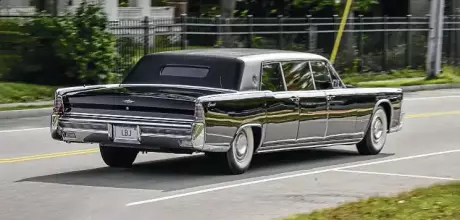1965 Lincoln Continental Limousine Mk4
US presidents are notorious for their fancy motorcades, a tradition that continues to this day with ‘The Beast’, a bulletproof Cadillac. Something a bit more classic however, and more suited to our tastes, is the 1965 Lincoln Continental Limousine on these pages, which hails from Lyndon B Johnson’s presidency…
Words: Axel E Catton
Photography: Greg Jarem
PRESIDENTIAL STATEMENT
It’s a Friday afternoon, and photographer Greg Jarem and I stand in the sun at the White House steps. In the distance, the wellknown front end of a pitch black 1965 Lincoln Continental limousine appears slowly and takes a wide turn towards us. It stops right in front of Greg and we expect that any second a Secret Service agent will run to a rear door and open it for the President.
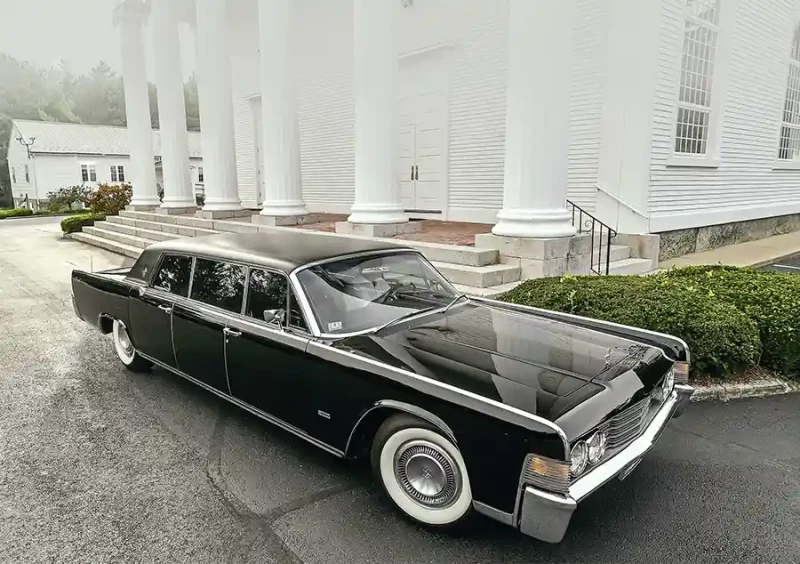
A 1965 Lehmann-Peterson Executive Limousine in and of itself is a very rare sight – only 78 were built that year, before a big change to a suaver 1966 design – but this black behemoth is exactly what you’d think it is: the President’s personal State Limousine.
Long before American State Limousines got names indicative of their underlying nature such as ‘The Beast’, and were essentially trucks built on huge ladder-frame SUVs, American presidents rode in much tamer – and significantly more elegant – car-based limousines; the most famous of them all being X-100, the dark blue open-top ‘Landaulet’ convertible Lincoln built by coachbuilders Hess & Eisenhardt, that drove John F Kennedy on to Dealey Plaza in Dallas on that fateful morning of November 22, 1963.
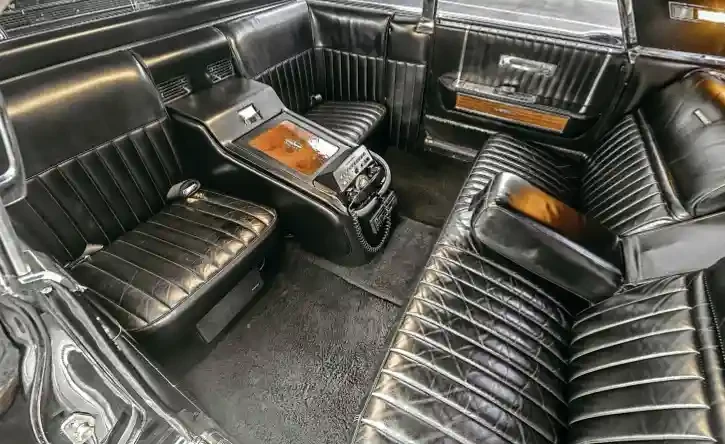
Mere hours after later, his successor Lyndon Baines Johnson (‘LBJ’) was sworn in as the 36th President of the United States. While it seems inconceivable to us now to imagine that X-100 would be rebuilt – and eventually repainted black per LBJ’s orders – nevertheless, it returned to the White House for over a decade of lesser, sideline duties and today can viewed in the Henry Ford Museum in Dearborn, Michigan.
LBJ’s main transport was an armoured 1965 stretch limo very similar to the one running its smooth seven-litre V8 engine in front of us and seen here on these pages. This particular vehicle was LBJ’s ‘red carpet car’; one of a handful of those limousines in service at the White House ready to ferry dignitaries and foreign Heads of State around DC while on visits.
Traditionally, these limousines used for presidential service rarely left the White House. If they weren’t donated to museums, often presidential libraries, or used for many years after, they were destroyed. “But this one got away”, grins John Lawlor, owner of the Automotion Garage in Middleborough, Massachusetts. John and I have been friends for about as long as he has owned LBJ’s limo, 17 years, so he was only too willing to take it out for our visit.
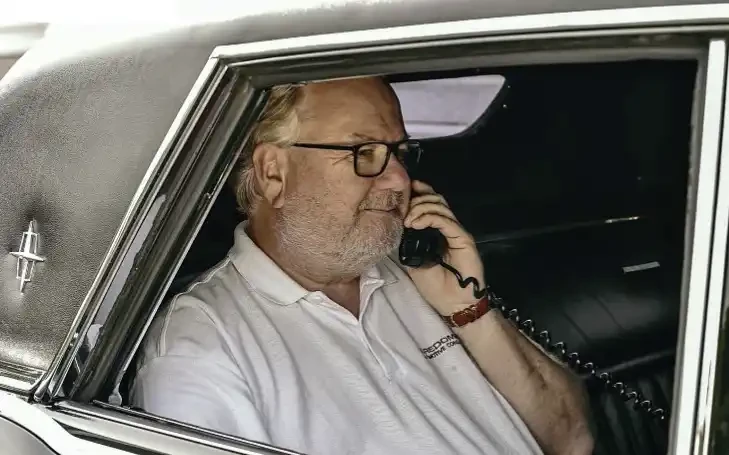
John recounted the story of how this car made it into private hands: “Traditionally, the White House Fleet were put into rather stressful service which made many of these cars quite used-up by the end of their life. When this car left the White House in 1969, it only had 33,000 miles and was in fantastic shape. We know that because even today it is all original. What you see here is how it left the service”.
John explains that the sides of his car were repainted a number of times, “but that was done during its active years. With the Secret Service being at and around the car so close, it was inevitable that the black paint got scratched, so it was the custom to repaint them every now and then.” Other than that, John emphasizes, the car is as original as it can be. A quick look inside confirms this as the seat leather, the carpet, and even the White House telephone all look like they must have when Petula Clark sang Downtown for the first time.
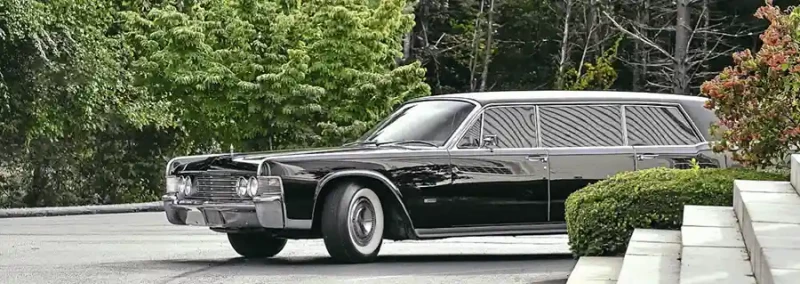
Lehmann-Peterson Executive Limousines were built by a private business out of Chicago, but with the full approval of the Ford Motor Company and with full factory warranty. “Any customer could order one at a Lincoln dealer if they wanted, and if they could afford it,” says Chris Dunn, Lincoln expert and owner of classic parts and service specialist Lincoln Land in Clearwater, Florida. “Lehmann-Peterson was founded by auto designers George Lehmann and Robert Peterson. They started out with a modest workshop in Chicago where they had built their first limousine on a 1963 Lincoln Continental four-door sedan.”
Lincoln executives were made aware of the car, and as L-P had no track record for this kind of work, took it in for extensive checks. Lincoln had been fearful of the side effects of cutting open and inserting an 86cm stretch into a unibody structure.
While many limousines before and after the Continental were built on cars using body-on-frame, the Continental unibodies were the first of their kind. “To say the least,” Chris Dunn confirms, “the results were promising and the car was even stiffer than the sedan it was based on, due to the strengthening measures L-P had put into place.” On February 25, 1964, Lehmann- Peterson and the Ford Motor Company entered into an official agreement for L-P to build a limited number of Executive Limousines available through Lincoln dealers. A handful were built on 1964 models, but production started in earnest for model year 1965.
Chris continues: “To build an L-P, regular sedans were delivered directly to the Chicago facility together with a Lincoln factory ‘limousine conversion kit’, which contained heavy-duty tyres and shocks as well as an additional air con unit and reinforced cooling elements required due to the heavier load. The car had its roof cut off and was cut in half, with an 86cm long section inserted. Reinforcements throughout the car were added, mainly in the roof structure. “Visible to the outside are the two larger beams behind the front doors. 31mm steel plates are fitted behind the driver where the partition is placed, along the sides under the new side windows and along the floor. This creates a box structure that is the main basis of the structural rigidity”.
Of course, the drive shaft and exhaust also needed to be lengthened and strengthened. The end result is impressive. The elongated limos were more rigid than the sedans they were based on, and at 2693kg weighed 300kg more than the sedans.
Inside, John’s limo features the usual configuration with a rear bench which could seat three adults, with two more seats mounted against the partition wall for staffers riding backwards. But instead of a black and white TV, here we have a wooden cabinet which contains a bar and the White House rotary dial telephone. That’s right. We have connection.
“Originally the car would also have had additional lights behind the front grille, which are gone,” explains owner John. But the telephone came with it, as you see here.” Above the dial reading “White House Motor Pool Mobile #9” is a row of direct dial buttons, presumably one for each of LBJ’s cabinet members. While riding in the back of the limo – where one is installed – I tried them all, but no one picked up. Also, the number for the White House Motor Pool (202) 485-8509 may have changed over the last 58 years as it didn’t seem to ring anywhere.
While John manoeuvres the 6.36m long limo through town, I reminisce about the two Lincoln Continentals I once owned, 1966 and 1967 convertibles. The thing which most impressed me with these – and which appears not have been lost in the limo conversion – is the extremely smooth ride, partly due to the heavy weight, but partly also down to the engineering by Lincoln and L-P engineers. And as befits a Presidential chariot, LBJ’s Lincoln doesn’t creak, or rattle, or make any unseemly noises. “It’s the way it always was,” confirms, John. “It still only has 37,392 miles today and has never been apart.” In a break during our shoot, I climb behind the wheel where everything is familiar to me. John relaxes in the shade with Greg, while I play around with the power seat, see how the seven-litre V8 sounds, how the gear lever of the three-speed Borg Warner auto falls into D − aaaand I’m off.
I’m taking a trip around the church (our ‘White House’, you guessed it, isn’t real – although it is the whitest church New England has to offer, Middleborough’s First Congregational Church at the Green). With its six white pillars and small steps, it presents a perfect backdrop for the shoot, and it has a little lane going around it. I do a few loops until Greg confirms he “has everything” and we’re ready to go home. John asks, “Do you wanna drive?” And, just like that, I steer the big friendly giant into Friday afternoon rush hour. John has rolled his window down and rests his arm on the wide ledge and starts involving me in banter.
What strikes me most when piloting this limo is how ‘normal’ it feels. Having owned and driven Sixties Lincolns before, this is no different. Once you get used to the width of two metres, you know what you’re doing. “You do have to make wide turns,” confirms John. No kidding! The bus-like wheelbase of 4.06m means my main concern isn’t the length or width of this thing, but the middle bit when coming around a bend. You have to swing out wide to make sure your inner panel doesn’t take anything with it. The lazy seven-litre is rated at 319bhp, but today we’re making full use of the 465lb-ft of torque available. While John and I roll through the little town’s rush hour, I notice the admiring looks people give this once-so-important Lincoln. Drivers, pedestrians, kids; most people born way after LBJ and this Lincoln were on our screens. As I return to John’s Automotion Garage, I look at him in disbelief. “And,” I ask, “where is the red carpet?!”
Swing wide sweet Chariot! Front seats are leather and include a driver’s lapbelt. 430 cu in MEL (Mercury/Edsel/Lincoln) V8. Any colour, as long as it’s black! Author Axel Catton takes LBJ for a spin. Phone connected directly with the White House. Regular Lincoln pressed metal hubcaps were used. Even today the ’65 Lincolns look smart on the road. Front jump seats could accommodate two Secret Service officers. Despite the extra length, Lincoln still looks in proportion. “Hello, is that 1965?!”


